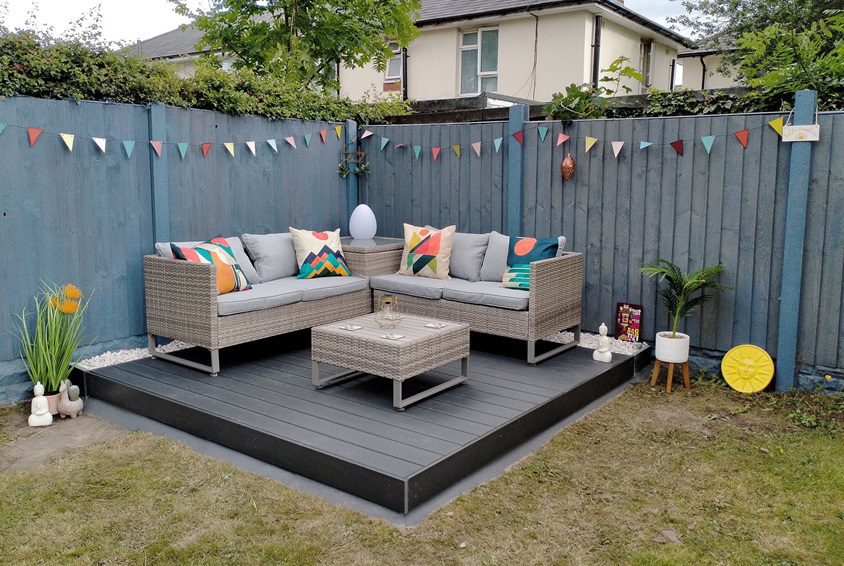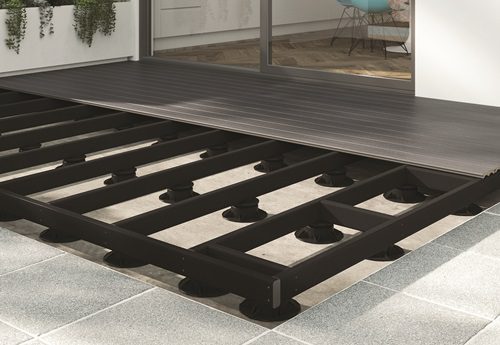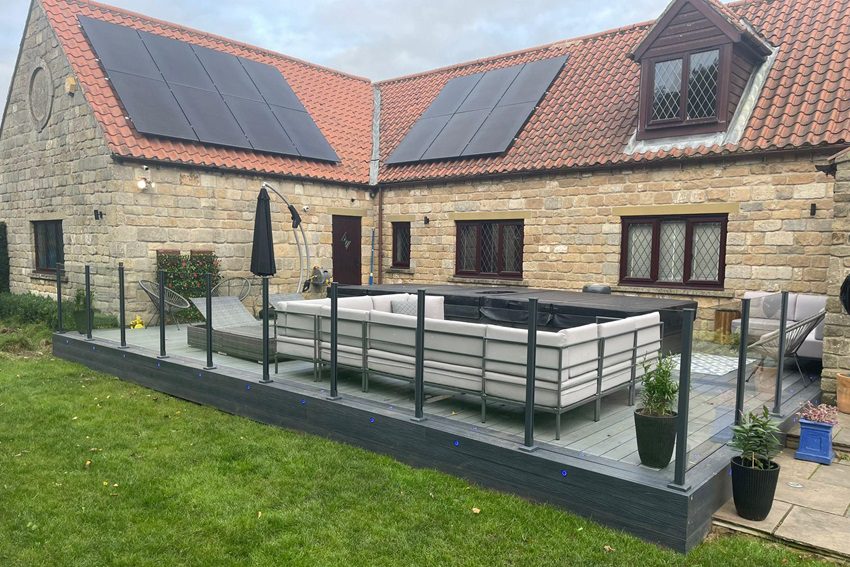Concrete surfaces such as patios provide the perfect base for installing composite decking, as they’re solid, mostly level and often carry less moisture than soil.
Below we explore the benefits of fitting composite decking over concrete, the factors you need to consider before you start your decking project, and how you go about installing composite decking on a solid surface.
Can you install composite decking over a concrete base?
Yes! You can definitely install composite decking on top of concrete or an existing stone patio. In fact, there’s several benefits to fitting composite decking over a concrete base as opposed to a sand or soil foundation.
Benefits of installing composite decking on concrete
1. Quick and easy installation
By installing on top of existing concrete you don’t need to create your own base which saves on installation time and costs.
2. No worry about weeds
With a pre-existing concrete base, there’s less chance of weeds and plants growing up between your boards once they’re laid.
3. Less moisture
A concrete base will contain less moisture than a soil or sand foundation, which will help keep the joists/beams and supports underneath of your composite decking dry.
4. It’s a quick garden update
Whether you just fancy a change, or your old patio is damaged, laying a new composite deck over your existing patio can transform your garden with very little effort.

What do you need to consider before laying composite decking on concrete?
Before laying your new composite decking, there are a few factors you need to consider.
Uneven ground
Most concrete areas or patios will be slightly uneven or have a slight slope to allow for water run-off.
It’s possible to level the surface using a concrete levelling compound, or you can use adjustable pedestals (see below). If you’re unsure of the best option, it’s always advisable to talk to an expert.
Let your concrete settle
If you’re laying concrete to install your decking on, remember it can take a while to settle – even up to a year – and during this time it can sink. So it’s important to ensure the concrete on which you’re laying your decking is completely settled, otherwise you risk your decking foundations sinking as well, and your decking becoming uneven.
Adjoining doors, steps and other features
When laying a composite deck on top of an existing patio or concrete base, the floor level will rise. This may seem obvious, but it’s important to remember as it will affect how the decking meets doors and other features, such as steps, and how you walk from one to the other.
How to install composite decking on concrete
1. Ensure the surface is level
Firstly, ensure that your surface is as level as it can be.
2. Install the subframe
You should never install composite decking directly on top of concrete, as the decking needs space for air to flow to ensure good ventilation. The next step is therefore to install a subframe. This frame will support your deck, giving it rigidity and strength, but also flexibility, allowing it to move with changes in temperature and weight loads.

What subframe do I need for a concrete base?
There are many things to consider when choosing your decking subframe material. There are pros and cons to using timber, composite or aluminium. Check out this post on types of subframe for your decking.
When it comes to decking supports, we recommend using adjustable pedestals. These allow you to raise and lower their height to the nearest millimetre, so you can get your joists level, meaning you’ll have a perfectly level top deck.
The perfect combination is to use composite joists / beams, so your substructure is as durable and long-lasting as your deck boards.
3. Install the decking boards
To install your decking boards simply follow the manufacturer’s instructions.
We hope these hints and tips will help you on your journey to making your dream garden a reality, but if you’ve any queries or would like more guidance, call our experts today on 01978 667 840.
